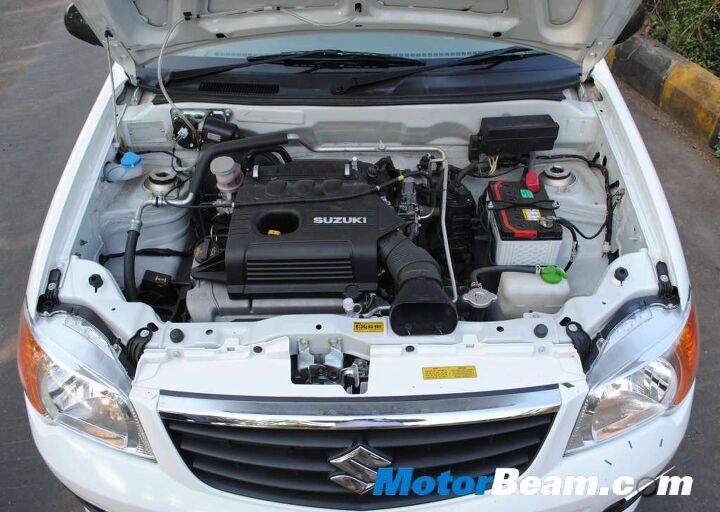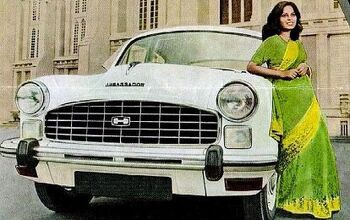India's Best-Selling Car – Maruti Suzuki Alto
India is touted to become one of the biggest car markets in the world by the end of this decade. However, there is a lot of uncertainty in the Indian automobile market. Fuel prices fluctuate (usually northwards) abruptly, while the Government tries to cover its mis-governance by increasing taxes on cars when its least expected. But which is the car that Indians are buying the most? It is the Maruti Suzuki Alto!
The Alto used to sell around 35,000 units earlier, but in the last two months, its sales have declined massively to 17,842 units in April and 20,724 units in May. The sales decline is because the Alto is offered with gasoline engines only. The demand for gasoline powered cars is fast decreasing in India. Diesel fuel is heavily subsidized and hence people are opting for diesel cars.
Mind you, the Alto is not the Alto that you see in Europe or Japan. The Indian Alto is the last generation Alto, which is still on sale with some cosmetic changes. The new Alto has been re-badged as the A-Star in India. So, the Indian Alto is a very old car, low on safety, low on space, but still the highest selling car. The reason is the Maruti Suzuki badge, which the Alto carries. Maruti Suzuki (a tie-up between Maruti [local] and Suzuki [Japan] in the early 1980s, but now Suzuki has a majority stake) has been present in India since a long time. There is a vast dealership network. The Alto is a well established brand and is the second cheapest car in the country (the cheapest car is the Tata Nano).
As you can see, the interiors of the Alto are terrible. The rear seats are best for children and the front seats are best for short passengers. The vehicle pictured here is the top end model, which accounts for less than 30% of the Alto’s sales. The more popular model carries a 2-spoke steering wheel and a basic instrument cluster (no tachometer). Power comes in from a 796cc, 3-cylinder, gasoline engine which produces 47 BHP and 62 Nm. The more powerful version uses a 998cc, 3-cylinder gasoline engine to produce 67 BHP and 90 Nm. Fuel efficiency is around 20 km/l (47 MPG Non-EPA). The 800cc Alto is priced at $5,500, while the 1000cc Alto costs $7,300.
The Alto has no safety features on offer, there are no ABS, Airbags, etc. The only safety feature is the engine immobilizer. Still, the Alto sells like hot cakes, which clearly shows that pricing and economy are still the two important parameters a majority of first time car buyers look out for, at least in India.
Faisal Ali Khan is the owner/operator of MotorBeam.com, a website covering the auto industry of India.
More by Faisal Ali Khan
Latest Car Reviews
Read moreLatest Product Reviews
Read moreRecent Comments
- Thomas Same here....but keep in mind that EVs are already much more efficient than ICE vehicles. They need to catch up in all the other areas you mentioned.
- Analoggrotto It's great to see TTAC kicking up the best for their #1 corporate sponsor. Keep up the good work guys.
- John66ny Title about self driving cars, linked podcast about headlight restoration. Some relationship?
- Jeff JMII--If I did not get my Maverick my next choice was a Santa Cruz. They are different but then they are both compact pickups the only real compact pickups on the market. I am glad to hear that the Santa Cruz will have knobs and buttons on it for 2025 it would be good if they offered a hybrid as well. When I looked at both trucks it was less about brand loyalty and more about price, size, and features. I have owned 2 gm made trucks in the past and liked both but gm does not make a true compact truck and neither does Ram, Toyota, or Nissan. The Maverick was the only Ford product that I wanted. If I wanted a larger truck I would have kept either my 99 S-10 extended cab with a 2.2 I-4 5 speed or my 08 Isuzu I-370 4 x 4 with the 3.7 I-5, tow package, heated leather seats, and other niceties and it road like a luxury vehicle. I believe the demand is there for other manufacturers to make compact pickups. The proposed hybrid Toyota Stout would be a great truck. Subaru has experience making small trucks and they could make a very competitive compact truck and Subaru has a great all wheel drive system. Chevy has a great compact pickup offered in South America called the Montana which gm could make in North America and offered in the US and Canada. Ram has a great little compact truck offered in South America as well. Compact trucks are a great vehicle for those who want an open bed for hauling but what a smaller more affordable efficient practical vehicle.
- Groza George I don’t care about GM’s anything. They have not had anything of interest or of reasonable quality in a generation and now solely stay on business to provide UAW retirement while they slowly move production to Mexico.





































Comments
Join the conversation
The most fun I've ever had in a car was in a 86 Suzuki Mighty Boy. The Mighty Boy was a tiny ute based on the second generation Alto. It had 22kW and weighed 560kg. I'm guessing this is based on the third generation Alto but if it is anything like my favorite little ute its a lot of fun to drive. The Mighty Boy I drove was the runabout for a small car yard. Its special feature was being light enough to physically manhandle into the tightest spaces, useful when the yard was absolutely packed with stock.
Indian car nice more than other cars, im using Indian car from long long time. noticias automotivas it is very easy to maintain, and its com potable, parts are very cheep. Maruti Suzuki Alto selling points have long included a low price and good fuel economy. this models, currently in its seventh generation, was first introduced in 1979 and has been built in many countries worldwide. The Alto badge has often been used on different cars in Japan and in export markets. any way i love too much this cars. The Alto badge has often been used on different cars in Japan and in export markets. if you want see more details log on to noticias automotivas you can find all about Maruti Suzuki Alto.......... ...